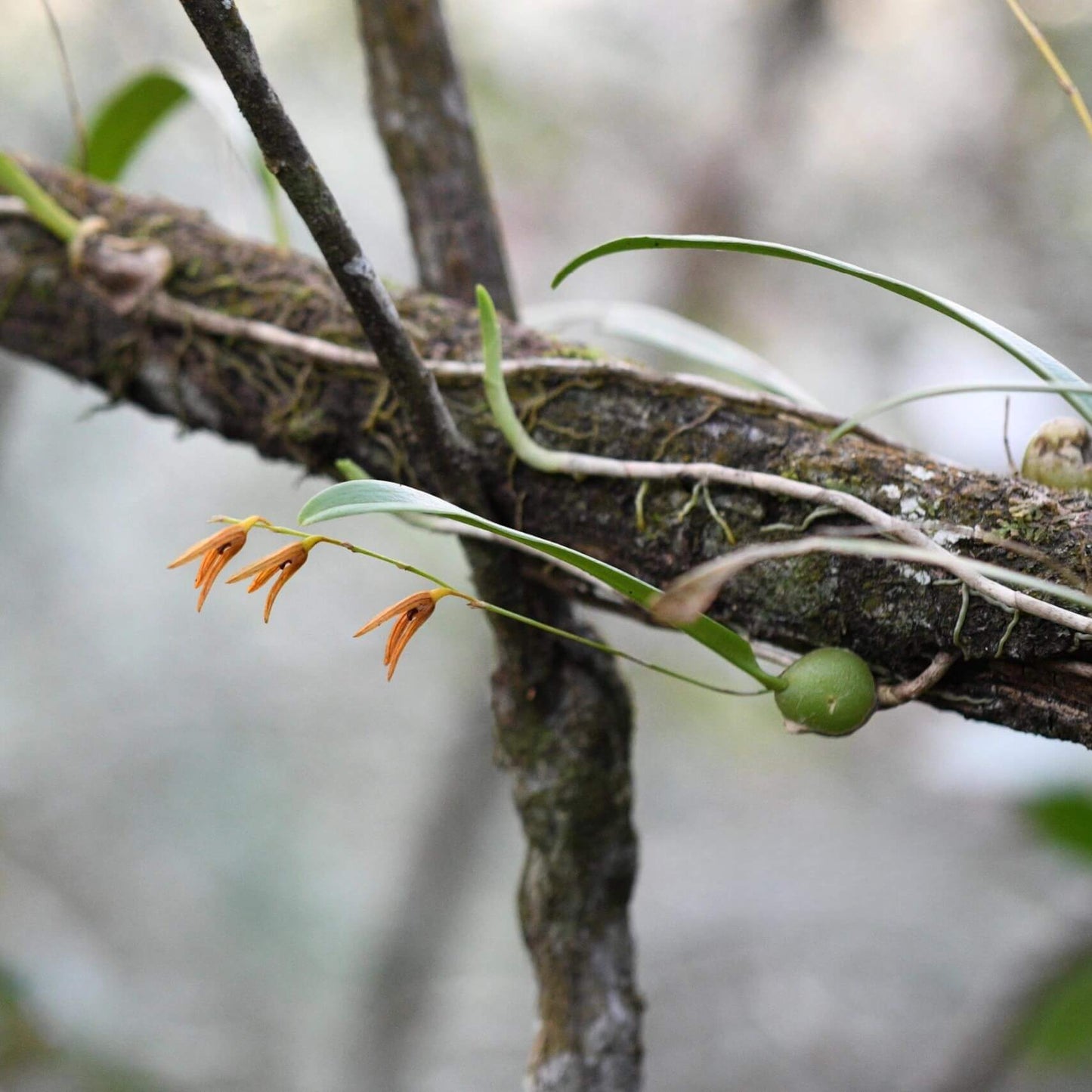Begin With Plants
Bulbophyllum reptans
Bulbophyllum reptans
Couldn't load pickup availability
Bulbophyllum reptans (Lindl.) Lindl. ex Wall. is a small to miniature epiphytic (occasionally lithophytic) orchid species native to parts of Asia including South-Central and Southeast China (Hainan, Guangxi, Yunnan, southeastern Tibet/Xizang), the Himalayas (Assam, Sikkim, Bhutan, Nepal), plus Myanmar, Thailand, Laos, and Vietnam. It is found in montane forests, particularly on the edges of sunny mountain forests or on moss-covered rocks, at elevations between 1000 and 2800 meters.
Features:
-
Has a creeping/branched rhizome, pseudobulbs spaced about 5-9 cm apart.
-
Pseudobulbs are ovoid to ovoid-conical; each bears a single leaf (apical), which is coriaceous, linear to narrowly oblong, acute.
-
Leaf size ~80-125 mm × 6-9 mm in some populations; leaves narrow toward the base with a short petiole.
-
Flowers: blooms are 3-6 per inflorescence, on erect, basal, slender flower stalks about 10 cm long or a bit longer. Flowers are yellowish with purple-red stripes or veins on them.
-
Flower size is about 1 cm (0.4") across.
Care Tips:
-
Temperature: Because it grows from ~1000-2800 m, it prefers cool to intermediate temperatures. Nights should be cooler; avoid heat stress.
-
Light: Bright, but filtered light (edges of forest, some exposure to sun without harsh direct midday sun). Avoid deep shade.
-
Humidity & Moisture: High humidity is essential. Keep substrate and moss around roots moist, but ensure good drainage so roots are not sitting in water.
-
Substrate / Mounting: Good options include mounting on bark or rocks, or using a very well-draining orchid bark or moss mix. Since it grows on moss-covered rocks in nature, replicating similar conditions helps.
-
Watering: Water abundantly during active growth, less so in cooler seasons but don’t allow full drying; stays moist but not soggy.
-
Flowering Encouragement: Provide a slight seasonal temperature change (cool nights), stable light, and good moisture.
Share

